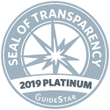BACKGROUND
Thyroid nodules are very common, occurring in up to 50% of individuals. The concern about any nodule is whether it is a cancer. Fortunately, only ~5-6% of nodules are cancerous. Ultrasound is the most common technique used to distinguish which nodules require further evaluation with biopsy or surgery and which can be watched. Features of the ultrasound images can be used to determine the risk that the nodule is a cancer and decide which should be biopsied. Clinicians look for different features of the nodules that are concerning for cancer, such as darkness (hypoechoic), a mostly solid composition, a taller-than-wide shape, irregular margins, or the presence of calcifications within the nodule. None of these features are individually diagnostic and thus several systems, combining these features, are described to determine the risk of a given nodule. The one developed by the American College of Radiology (American College of Radiology Thyroid Imaging and Reporting Data System – ACR TI-RADS) is frequently used and has been shown to helpful to avoid unnecessary biopsies. However, even in this well-developed system, there is variation within individual readings and, even more so, between readers.
This study was performed to evaluate a specific artificial intelligence (AI) decision-support system (DSS), called Koios DS, to determine if this would improve the diagnostic accuracy and consistency among different readers.
THE FULL ARTICLE TITLE
Fernández Velasco P et al. Clinical evaluation of an artificial intelligence-based decision support system for the diagnosis and American College of Radiology Thyroid Imaging Reporting and Data System classification of thyroid nodules. Thyroid 2024;34(4):510-518; doi: 10.1089/thy.2023.0603. PMID: 38368560.
SUMMARY OF THE STUDY
This was a study of the ultrasound imaging of all nodules with cytological and/or histological results from a thyroid nodule clinic referral unit of a university hospital. It included all consecutive patients over 18 years of age with thyroid nodules and at least two ultrasound images with cytologic and/or histologic findings evaluated from June 2021 to December 2022.



